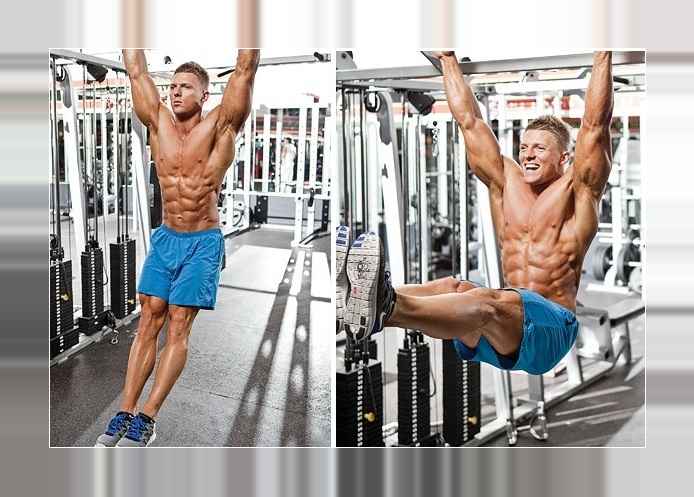When you want six-pack abs, you need to follow a right combination of diet and exercise. Not all ab exercises work in an effective way. You have to select the best ones, and that is when you can include hanging leg raises in your routine. These special leg moves are the reason why people doing calisthenics usually have amazing core strength and great abs. Let's find out more.

Step-by-Step Guide to Hanging Leg Raise
You can do crunches all day long, but you will not get the type of results you get from doing hanging leg raises. Interestingly, this exercise targets your whole body, and not just abs. Here is how to do it:
1. Hang from a Bar
The first step is to hang from a pull-up bar, and this is not going to be easy if you have just started some fitness training. You will be able to perform leg raises properly if you have the strength to hang from the bar for at least 20 seconds. If you do not have enough strength yet, it is a good idea to first develop such strength and then move on to the next step. Just practice hanging from the bar and you will build the endurance.
2. Move the Knees First
When you have the strength to hang from bar for long enough, you should start with the bent-knee version first. Hang from the bar and bend your knees a little. Now, slowly raise your knees while curling your hips forward. Just ensure that your abdominal muscles should initiate the movement. Therefore, it is better to go slowly in the beginning to have full control over the movement. Do not worry even if you could do a couple of reps in the beginning.
Be sure to focus on quality instead of quantity. Even a few good reps are better than several reps that you perform while swinging your body. You can also touch the ground with your feet in between reps to help stabilize your body a little. If you find it too hard to raise your bent-knees, you can start with hanging bicycles instead.
3. Perform Straight Leg Raises
Once you have performed a few bent-knee leg raises, you can make it more difficult by keeping your legs straight. You may find it very challenging in the beginning, especially if you have tight hamstrings. Therefore, it is okay to bend your knees a little on the way up. You can maintain strict form when you have increased your flexibility a little. You can build some strength and flexibility in the abdominal region by practicing planks and L-sits.
Once you are in a position to manage several hanging leg raises with straight legs, you can still make it more challenging by doing the exercise with one arm only.
Caution:
Do not try to move too fast, especially in the beginning. You need to get an idea of which muscles are put to use during the exercise, so it is better to move slowly and deliberately. It is better to avoid using weights too early. You should develop your strength first, understanding how to maintain your balance, and then use weight to perform the movement. You can simply hold a dumbbell in between your feet to add some intensity to the exercise.
Muscles That Can Be Worked with Hanging Leg Raises
Many people think hanging leg raise can only target your abs, but that is not true because the exercise uses a combination of other muscles too.
- Iliopsoas: It combines two muscles, i.e., the iliacus and the psoas major. Together they are also called the hip flexors and work to help flex the trunk and the thigh. You will be putting so much stress on your hip flexors while performing a hanging leg raise.
- Rectus Femoris: This superficial muscle is one of the four quadriceps muscles found in the middle of your anterior thigh. It works together with the iliopsoas to help flex your hips during the exercise.
- Tensor Fascia Lata: It is a synergist of the rectus femoris and iliopsoas muscles during hip flexion. Located on the upper lateral thigh, it stays hidden underneath the layers of connective tissue.
- Abductors: Located on the inner thighs, these muscles consist of the abductor longus, abductor magnus, and abductor brevis. You use these muscles while trying to press the thighs together during the movement.
- Rectus Abdominis: These supervision and medial muscles are located in the abdomen and work to rotate and flex your lumbar region. These muscles are also activated while walking because they stabilize the pelvis. You engage these muscles in the exercise when you lift your knee above the level of your hip.
- Obliques: A hanging leg raise will work on your external and internal obliques when your knees are horizontal during the movement. The obliques help with lateral flexion and trunk rotation. It is possible to target both obliques by alternately raising your legs to the right and left while performing the exercise.
- Secondary Muscles: While performing a hanging leg raise, you will also be using your shoulders, forearms, and back because you need to hold the bar, stabilize your back, and use your shoulders to stabilize your entire body.